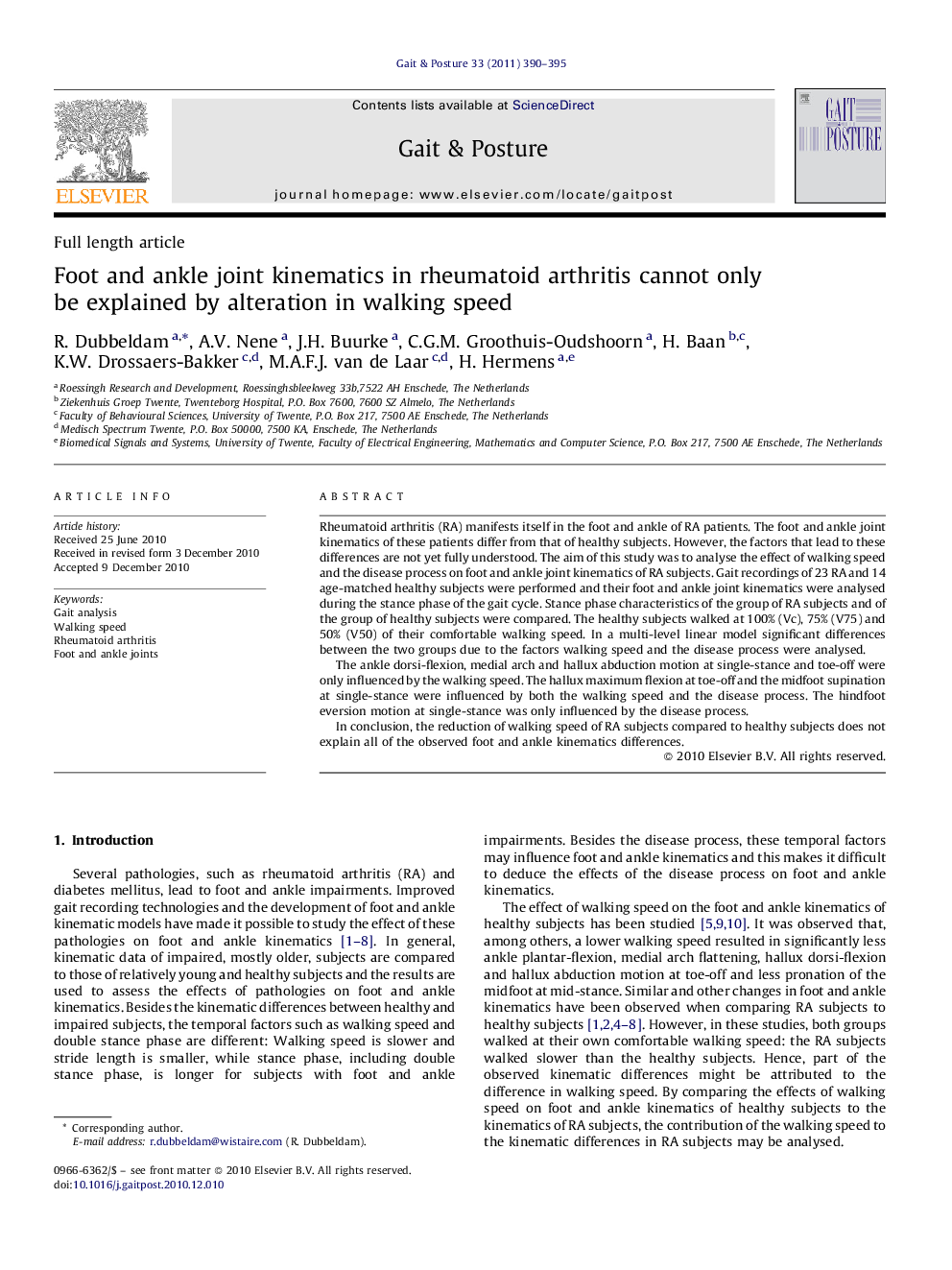| Article ID | Journal | Published Year | Pages | File Type |
|---|---|---|---|---|
| 4056543 | Gait & Posture | 2011 | 6 Pages |
Rheumatoid arthritis (RA) manifests itself in the foot and ankle of RA patients. The foot and ankle joint kinematics of these patients differ from that of healthy subjects. However, the factors that lead to these differences are not yet fully understood. The aim of this study was to analyse the effect of walking speed and the disease process on foot and ankle joint kinematics of RA subjects. Gait recordings of 23 RA and 14 age-matched healthy subjects were performed and their foot and ankle joint kinematics were analysed during the stance phase of the gait cycle. Stance phase characteristics of the group of RA subjects and of the group of healthy subjects were compared. The healthy subjects walked at 100% (Vc), 75% (V75) and 50% (V50) of their comfortable walking speed. In a multi-level linear model significant differences between the two groups due to the factors walking speed and the disease process were analysed.The ankle dorsi-flexion, medial arch and hallux abduction motion at single-stance and toe-off were only influenced by the walking speed. The hallux maximum flexion at toe-off and the midfoot supination at single-stance were influenced by both the walking speed and the disease process. The hindfoot eversion motion at single-stance was only influenced by the disease process.In conclusion, the reduction of walking speed of RA subjects compared to healthy subjects does not explain all of the observed foot and ankle kinematics differences.
